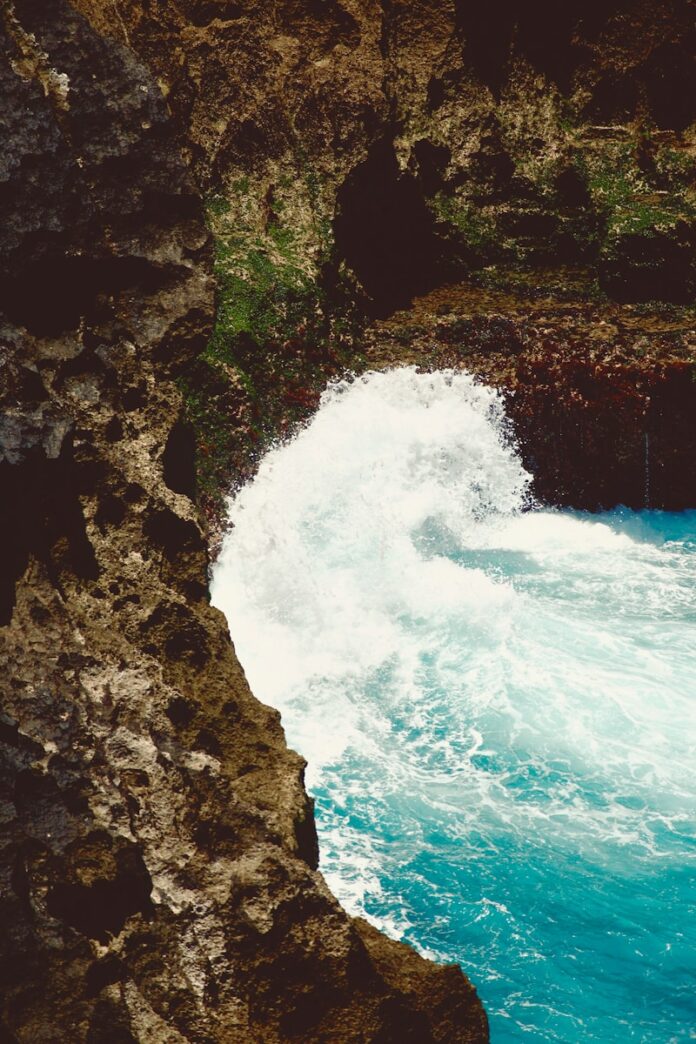Introduction to East Bali
Bali, an Indonesian paradise, offers an array of breathtaking landscapes and culturally rich sites. While the western and central parts of Bali are well-known for their bustling tourist hubs, East Bali provides a more tranquil and spiritually enriching experience. In this comprehensive guide, we explore three of the most iconic destinations in East Bali: the Gate of Heaven at Lempuyang Temple, the Water Palace at Tirta Gangga, and the Sleeping Gajah at Pura Besakih. Each site is steeped in history and offers visitors a glimpse into the spiritual and cultural essence of Bali.
Gate of Heaven: A Spiritual Journey
Lempuyang Temple: A Sacred Pilgrimage Site
The Gate of Heaven, located at Lempuyang Temple, is one of Bali’s most revered spiritual landmarks. The temple is part of the Pura Sad Kahyangan Jagad, a group of six temples considered to be the pillars of Bali. Lempuyang Temple is not just a single temple, but a complex of seven temples ascending Mount Lempuyang. The highest temple sits at 1,175 meters above sea level, requiring a steep and challenging climb of over 1,700 steps.
The Gate of Heaven is located at the Penataran Agung temple, the first and most accessible of the seven temples. This iconic gate frames the majestic Mount Agung in the background, creating a stunning visual that has become synonymous with Bali’s spiritual landscape.
History and Cultural Significance
The Lempuyang Temple is believed to be one of the oldest and most sacred temples in Bali, dating back to the 11th century. It was established by Rsi Markandeya, a revered Hindu sage, and has been a site of pilgrimage for centuries. The temple complex is dedicated to Ida Batara Hyang Iswara, a manifestation of Lord Shiva, who is believed to protect the eastern part of Bali.
The Gate of Heaven itself holds deep symbolic meaning for the Balinese. It represents the passage from the earthly realm to the divine, and standing at the gate is believed to bring spiritual enlightenment. The gate’s intricate carvings and towering structure are a testament to the architectural brilliance of Balinese craftsmen.
What to Expect During Your Visit
Visitors to the Gate of Heaven are often struck by the sheer beauty and serenity of the location. The early morning hours are the best time to visit, as the sunrise casts a golden glow over Mount Agung, creating a picture-perfect moment. Due to the temple’s spiritual significance, visitors are required to dress modestly, wearing sarongs and sashes, which can be rented at the entrance.
While the Gate of Heaven is the main attraction, it’s worth exploring the rest of the temple complex. The hike to the higher temples offers stunning panoramic views of the surrounding landscape, including the lush forests and the distant ocean. Along the way, you’ll encounter various shrines, statues, and sacred trees, each with its own unique story.
Booking Your Visit
To experience the Gate of Heaven, you can book a guided tour through Viator, which offers a range of packages that include transportation, entrance fees, and a knowledgeable guide. These tours often combine visits to the Water Palace and Sleeping Gajah, making it a convenient way to explore East Bali’s treasures.
Water Palace: A Royal Retreat
Tirta Gangga: The Royal Water Garden
The Water Palace at Tirta Gangga is a stunning example of Balinese water architecture. Built in 1946 by the last King of Karangasem, Anak Agung Anglurah Ketut Karangasem, the palace served as a royal retreat. The name Tirta Gangga translates to “water from the Ganges,” reflecting the sacred nature of the water that flows through the palace.
The Water Palace is a tranquil oasis, featuring a series of pools, fountains, and gardens that are meticulously maintained. The centerpiece of the palace is the eleven-tiered Nawa Sanga fountain, surrounded by stepping stones that allow visitors to walk across the water. The palace’s intricate carvings and statues are inspired by Hindu mythology, creating an atmosphere of peace and serenity.
Historical Background
Tirta Gangga was constructed during a time when the region was recovering from the devastation of World War II. The king, who was known for his love of art and architecture, personally oversaw the design and construction of the palace. He drew inspiration from both Balinese and European architectural styles, resulting in a unique blend of cultural influences.
The Water Palace was built on the site of a natural spring, which is considered sacred by the local people. The water is believed to have healing properties, and many visitors come to Tirta Gangga to bathe in the pools and seek spiritual purification.
Exploring the Palace Grounds
As you enter Tirta Gangga, you’ll be greeted by a series of ornate gates and statues that set the tone for the rest of the palace. The main pool, with its stepping stones and guardian statues, is a popular spot for photos. Visitors can also take a dip in the smaller swimming pools, which are fed by the natural spring.
The gardens at Tirta Gangga are a sight to behold, with lush greenery, vibrant flowers, and intricately designed pathways. As you stroll through the grounds, you’ll encounter various statues and shrines, each with its own significance. The palace is also home to several koi ponds, where you can feed the fish and enjoy the tranquil surroundings.
Dining and Relaxation
After exploring the palace, you can relax at one of the on-site restaurants, which offer stunning views of the surrounding rice terraces. The restaurants serve a variety of local and international dishes, including traditional Balinese cuisine. Enjoying a meal at Tirta Gangga is a perfect way to soak in the beauty and tranquility of the palace.
Booking Your Visit
To make the most of your visit to the Water Palace, consider booking a guided tour through Viator. These tours often include transportation, entrance fees, and a guide who can provide insights into the history and significance of the palace. A visit to Tirta Gangga can also be combined with other attractions in East Bali, such as the Gate of Heaven and Sleeping Gajah.
Sleeping Gajah: The Tranquil Elephant
Pura Besakih: Bali’s Mother Temple
The Sleeping Gajah, also known as the Sleeping Elephant, is a natural rock formation located near Pura Besakih, Bali’s largest and holiest temple. Pura Besakih, often referred to as the Mother Temple, is situated on the slopes of Mount Agung, Bali’s highest volcano. The temple complex is a sprawling network of over 80 individual temples, each with its own unique architecture and significance.
The Sleeping Gajah is a lesser-known attraction but holds great significance due to its unique shape, which resembles a reclining elephant. The rock formation is considered sacred by the Balinese, and it is believed to be a guardian of the temple.
The Significance of Pura Besakih
Pura Besakih is the most important temple in Bali, and it is the spiritual heart of the island. The temple complex is dedicated to the Hindu trinity of Brahma, Vishnu, and Shiva, with each deity having its own dedicated shrine. The main temple, Pura Penataran Agung, is the largest and most prominent, and it is the site of many important religious ceremonies.
The Sleeping Gajah is located near the entrance to Pura Besakih, and it is often overlooked by visitors. However, the rock formation is considered a sacred guardian of the temple, and it is believed to have protective powers. The Balinese people hold ceremonies and offer prayers to the Sleeping Gajah, asking for protection and blessings.
Exploring the Temple Complex
Pura Besakih is a vast complex, and exploring it can take several hours. The main temple, Pura Penataran Agung, is the focal point of the complex and is where most of the ceremonies are held. The temple is built on six levels, with each level representing a different aspect of the Hindu cosmos.
As you explore the temple complex, you’ll encounter various shrines, statues, and sacred sites. Each temple within the complex has its own unique architecture and significance. The intricate carvings, towering gates, and vibrant offerings create a truly awe-inspiring atmosphere.
The views from Pura Besakih are breathtaking, with panoramic vistas of the surrounding countryside and the distant ocean. The temple’s location on the slopes of Mount Agung adds to its spiritual significance, as the volcano is considered a sacred mountain by the Balinese.
How to Reach Sleeping Gajah and Pura Besakih
Reaching Pura Besakih and the Sleeping Gajah requires a bit of effort, as the temple is located in a remote part of Bali. The most convenient way to visit is by booking a guided tour through Viator, which includes transportation, entrance fees, and a knowledgeable guide. The tour will take you through the scenic countryside of East Bali, offering a glimpse into the island’s rich cultural heritage.
Practical Information for Visitors
Best Time to Visit East Bali
East Bali can be visited year-round, but the best time to visit is during the dry season, which runs from April to October. During this time, the weather is warm and sunny, making it ideal for exploring the outdoor attractions. The rainy season, from November to March, can bring
heavy downpours, but the landscape is lush and green, offering a different kind of beauty.
What to Wear
When visiting the temples and sacred sites in East Bali, it’s important to dress modestly. Visitors are required to wear a sarong and sash, which can be rented at the entrance to each site. It’s also a good idea to wear comfortable shoes, as some of the sites, such as Lempuyang Temple, require a fair amount of walking and climbing.
Respecting Local Customs
Bali is a deeply spiritual place, and it’s important to respect the local customs and traditions. When visiting the temples, always follow the rules and guidelines provided by the temple staff. Avoid pointing your feet towards the shrines, and do not touch or disturb the offerings. It’s also customary to make a small donation when visiting the temples, which helps with the maintenance and preservation of the sites.
Transportation Options
East Bali is a relatively remote part of the island, and transportation options can be limited. The most convenient way to explore the region is by booking a guided tour through Viator. These tours often include transportation, entrance fees, and a guide who can provide valuable insights into the history and culture of the region. Alternatively, you can hire a private driver for the day, which allows for more flexibility in your itinerary.
Accommodation Options
There are a variety of accommodation options in East Bali, ranging from luxury resorts to budget-friendly guesthouses. Many of the resorts are located near the beach, offering stunning views of the ocean and easy access to the attractions. If you prefer a more immersive experience, consider staying in a traditional Balinese guesthouse, where you can experience the local culture and hospitality.
Dining and Cuisine
East Bali offers a wide range of dining options, from local warungs to fine dining restaurants. The region is known for its fresh seafood, which is caught daily by local fishermen. Be sure to try the traditional Balinese dishes, such as Nasi Goreng (fried rice), Satay (grilled skewers), and Babi Guling (roast pork). Many of the restaurants in the area offer stunning views of the ocean or the surrounding rice terraces, making for a memorable dining experience.
Conclusion
East Bali is a treasure trove of cultural and natural wonders, offering a unique glimpse into the island’s rich heritage. From the spiritual heights of the Gate of Heaven at Lempuyang Temple to the tranquil beauty of the Water Palace at Tirta Gangga and the sacred significance of the Sleeping Gajah at Pura Besakih, East Bali is a destination that should not be missed.
To fully appreciate the beauty and significance of these sites, consider booking a guided tour through Viator. The tours offer a convenient and insightful way to explore the region, ensuring that you don’t miss any of the highlights.
For more information and additional travel tips, visit Izase, your go-to source for lifestyle and travel inspiration. Please note that while we strive to provide accurate information, there may be modifications or changes to the details provided, so it’s always best to check the booking page on Viator for the most up-to-date information.
MORE FROM IZASE


